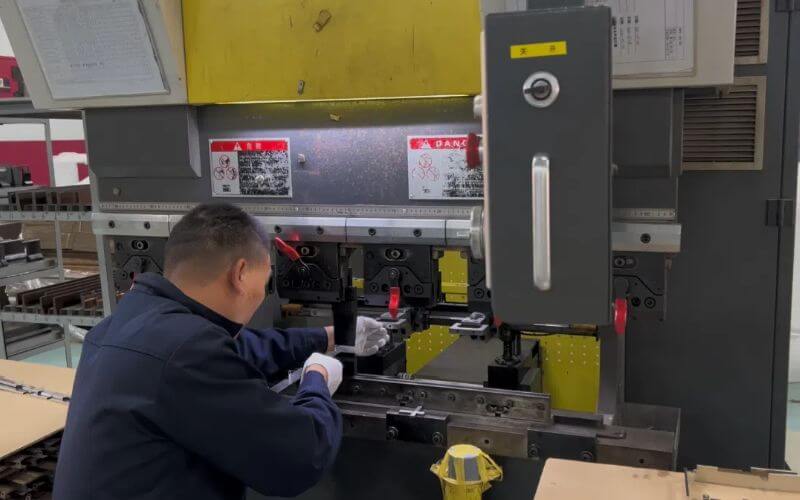
Welding is the process of joining metal parts together. It is one of the most common ways of making connections between metal objects and there are many different types of welding. is sheet metal welding a subset of welding used to construct metal structures, piping and other things such as storage tanks?
The art of sheet metal welding is a complex process involving a variety of techniques. You need to have the right knowledge and skills to achieve the best possible results in a welding job. Sheet metal welding is a great way to save time on your projects.
This article will provide you with methods and important suggestions to remember when welding thin sheet metal for the best results.
Welding sheet metal is one of the basic manufacturing processes for joining metals. The process usually involves heating the two pieces of sheet metal to the melting point and then using a torch to weld them together.
The sheet metal welding process is commonly found on aircraft, cars, trucks, appliances, boats, ships and other industrial equipment.
While stainless steel is a common metal used in sheet metal welding, other metals are also used. These include aluminium, carbon steel and even gold.
Each metal has its own advantages and disadvantages that should be considered before welders begin their projects. Carbon steel is the cheapest and most commonly used metal for sheet metal welding. It is strong and easy to weld, but it is also susceptible to rust and corrosion.
Aluminium is another popular metal for sheet metal welding. It is light and corrosion resistant, but can be difficult to weld.
Gold is the most expensive metal used for sheet metal welding. It is incredibly strong and does not corrode, but it is also very difficult to weld.
Before arc welding or oxygen gas, things were simple. Welding tough metals like stainless steel and titanium is now easy thanks to modern technology. But each type of metal requires a different technique, and it’s up to us to choose the right one. We have to decide the best way to do the job.
The technique is known as ‘skip welding’ and involves making several stitches, or short welds, at strategic locations to secure the position of the thin sheet. After a few minutes of cooling, the welder can then proceed to weld in previously un-weldable areas. It is possible to reduce metal distortion and warping by using skip welding.
Skip welding is an effective method of joining thin sheets of metal. It allows you to avoid distorting the shape of the parts and avoids warping.
When welding, avoid weaving the torch; instead, move the torch quickly back and forth along a straight line.
Tack welding is an excellent method of joining thin steel sheets. It is also known as spot welding. Tacks are very small welds that do not damage the surface of the material.
When you put two pieces of metal together, you need to make sure there is a gap of 1mm between them. You then place a tack in the centre of the gap.
Once the tack is in place, press hard on both sides of the tack until it melts. Once melted, the tack will stick to the metal and form a strong bond.
You should carry out a test run on the metal before starting production welding. Whenever you use welding equipment, it is important to practise good workshop safety. This includes wearing the correct safety equipment such as a welding helmet, gloves and apron. In addition, always have a fire extinguisher on hand in case of an accident.
There are many variables that can affect the quality of a weld, so it’s important to optimise your process to ensure the best results. This includes using the correct amperage and voltage, as well as ensuring that your tools are clean and dry. This will allow you to have a prototype of your product, whether it is in its semi-finished or finished state.
Choosing a compatible filler metal for your fabrication’s mechanical properties is essential. Consider the metal’s thickness, as thicker metals require more heat to melt. Using too thick a filler can cause overheating and damage, while too thin a filler may result in a weak weld.
The type of metal also influences the choice of filler. Different metals require specific fillers; for example, aluminum typically needs a thicker filler than steel.
Use a rod thinner than your metal and an electrode smaller than 1/8 inch. A smaller electrode helps create a tighter arc, reducing burn-through, and can be ground down to a smaller size if needed.
When welding, you need to consider the material you’re using. For example, if you’re welding aluminium, you’ll need a different size of wire than if you’re welding steel.
You should also consider your skill level when choosing the right size of wire. If you’re just starting out, you might choose a small wire to help you get the hang of welding. As you gain experience, you’ll feel more comfortable with larger sizes.
Are you looking for a reputable partner for your parts fabrication and machining projects? Look no further. At PROTO MFG, we specialize in CNC machining and related technologies, including sheet metal fabrication, rapid prototyping, etc. Whether it is a project with a simple design or parts with complex geometries, do not hesitate to contact us today!